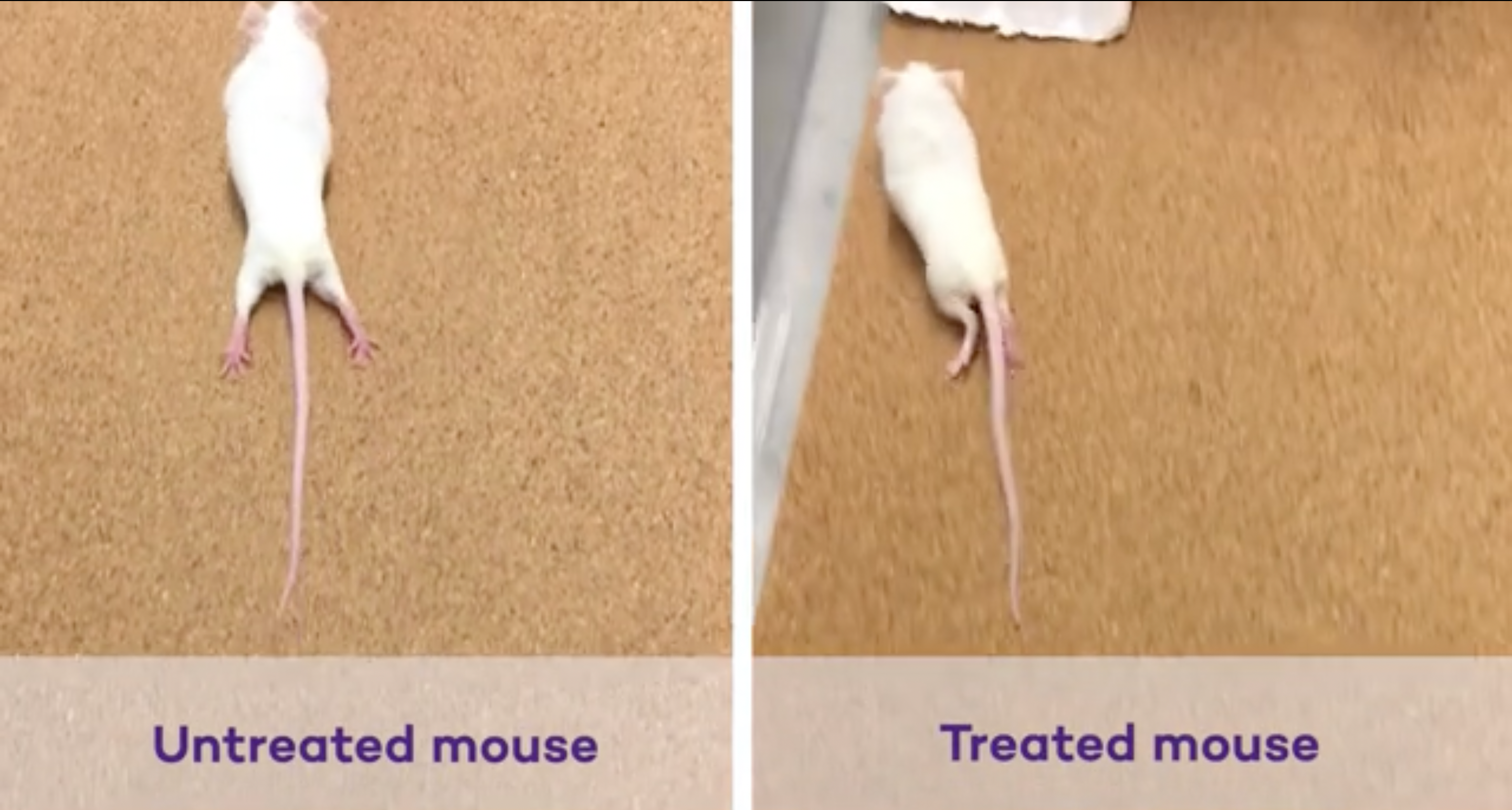New therapy with ‘special scaffold’ reverses paralysis in mice
Mice could walk just four weeks after therapy was administered, says study

Your support helps us to tell the story
From reproductive rights to climate change to Big Tech, The Independent is on the ground when the story is developing. Whether it's investigating the financials of Elon Musk's pro-Trump PAC or producing our latest documentary, 'The A Word', which shines a light on the American women fighting for reproductive rights, we know how important it is to parse out the facts from the messaging.
At such a critical moment in US history, we need reporters on the ground. Your donation allows us to keep sending journalists to speak to both sides of the story.
The Independent is trusted by Americans across the entire political spectrum. And unlike many other quality news outlets, we choose not to lock Americans out of our reporting and analysis with paywalls. We believe quality journalism should be available to everyone, paid for by those who can afford it.
Your support makes all the difference.Scientists have developed a novel therapy that promotes recovery from spinal cord injury and reverses paralysis in mice, allowing them to walk again within weeks of treatment.
In the research published in the journal Science on Thursday, scientists administered a single injection to tissues surrounding the spinal cords of paralysed mice. Just four weeks later, the rodents could walk again.
The therapy, administered in the form of a gel, works by organising molecules at the injury site into a complex network of nanofibers mimicking the natural matrix found in all tissues that play a major role in wound healing and cell to cell communication, the study noted.
This gel tunes the motion of molecules at the injury sites, enabling them to find and properly engage with constantly moving receptors on cells, said the researchers, including those from Northwestern University in the US.
“The key innovation in our research, which has never been done before, is to control the collective motion of more than 100,000 molecules within our nanofibers,” study co-author Samuel I Stupp from Northwestern University said.
One of the challenges in administering wound healing drugs, the scientists said, is that the receptors sticking out of nerve cells and other types of cells constantly moves around.
The novel gel fine-tunes the motion of molecules which “move, ‘dance’ or even leap temporarily out of these structures”, enabling them to connect more effectively with receptors, Dr Stupp explained.
“Given that cells themselves and their receptors are in constant motion, you can imagine that molecules moving more rapidly would encounter these receptors more often,” he said. “If the molecules are sluggish and not as ‘social’, they may never come into contact with the cells.”
When the molecules connect to the receptors, they trigger two cascading signals critical to spinal cord healing.
One of the signals prompts the regeneration of long tails of the spinal cord’s nerve cells, whose damage often results in the loss of feeling in the body or even paralysis.
By repairing these nerve cell tails – called axons – the communication between the body and brain can be increased, the scientists added.
The second signal, the scientists said, causes the proliferation of other types of cells around the nerves, which promotes the regrowth of lost blood vessels feeding neurons and critical cells for tissue repair.
One of the challenges with using the body’s natural proteins as drugs is that they degrade very fast before they induce the desired biological responses, the researchers said.
But in the new therapy, by acting like a natural scaffold, the molecules are able to last longer and promote nerve regeneration.
“Our synthetic signals are short, modified peptides that — when bonded together by the thousands — will survive for weeks to deliver bioactivity. The end result is a therapy that is less expensive to produce and lasts much longer,” Dr Zaida Álvarez, the study’s first author and former research assistant professor in Dr Stupp’s laboratory, noted.
With further studies and clinical trials, the scientists believe that the new therapy could be used to prevent paralysis after major trauma such as automobile accidents, falls, sports accidents and gunshot wounds, as well as from diseases.
“For decades, this has remained a major challenge for scientists because our body’s central nervous system, which includes the brain and spinal cord, does not have any significant capacity to repair itself after injury or after the onset of a degenerative disease,” Dr Stupp said.
The underlying discovery of “dancing molecules,” the scientists added, can also be applied to other therapies and targets.
Join our commenting forum
Join thought-provoking conversations, follow other Independent readers and see their replies
Comments